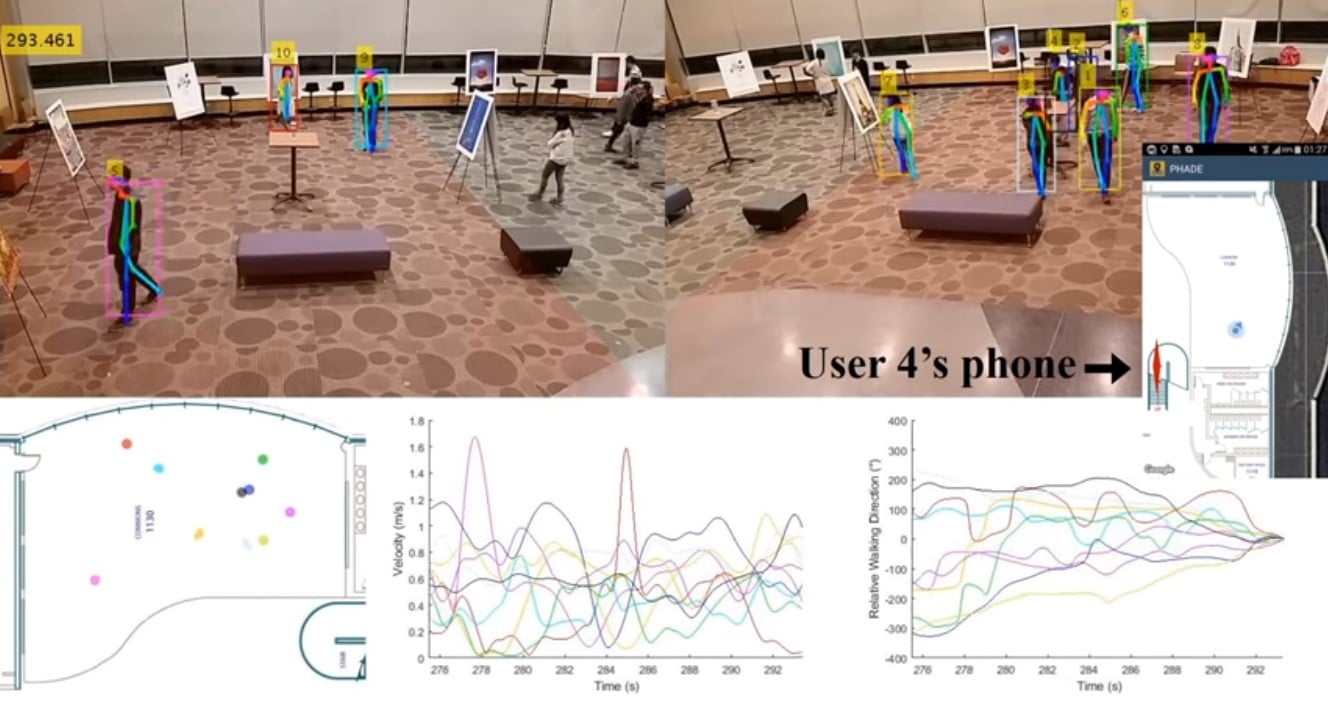Cameras became fascinating ever since they appeared for the first time. Their first purpose was to capture a memorable moment with family, friends or a beautiful scene. With the development of technology and cameras in particular, their purpose grew too. They are now used pretty much everywhere, from phones to streets, museums, shops and even in medicine. However a new tech lets cameras talk to you, with the new technology emerging from Purdue University.
A group of computer science researchers from Purdue University developed a new project which is a new tech that lets cameras talk to you, called “private human addressing” or PHADE, for short. The newly developed cameras are systems that communicate with people’s cell phones without transmitting personal data like an IP or Mac address. The new technology uses motion patterns in order to address code, so that if hackers try to get into it, they wouldn’t be able to discover where the person is located.
The team made this concept a reality and described it in a new paper published on June 15 on EurekaAlert. The technology works in the following way. A person is located in a supermarket or a museum and an unfamiliar object catches their attention. However, everyone’s too busy to explain what that unfamiliar object is or how it works. While taking a look at the object, say a new product or a painting in a museum, a message is delivered to their cell phone describing properties of the product or a painting, including its history.
In order to achieve this, researchers used something similar to the directional audio experience that can easily be found at theme parks. They used processing of the live video data to enable the technology to successfully sequence motion patterns of pedestrians and once they are in the desired range, in front of some artwork, for example, they will send a package of information that is connected to the motion address of the pedestrian. Then the user’s cell phone will identify that the motion address is the same as its own and let the message be received.
Researchers believe that the tech will not only be useful for identifying artwork or products, but also help reduce crime in certain areas, such as for pedestrians on the street.
“Our system serves as a bridge to connect surveillance cameras and people,” He Wang, a co-creator of the technology and assistant professor of computer science, said in a statement. “[It can] be used by government agencies to enhance public safety [by deploying] cameras in high-crime or high-accident areas and warn[ing] specific users about potential threats, such as suspicious followers.”
However, there’s an ongoing debate on the benefits of an interconnected world, a trend that is rapidly increasing. Perhaps pedestrians will be or feel safer knowing that the new tech lets cameras talk to you and in that way protects you from different dangers that occur daily on the streets.
Check out the video below which describes how the new tech lets cameras talk to you.





